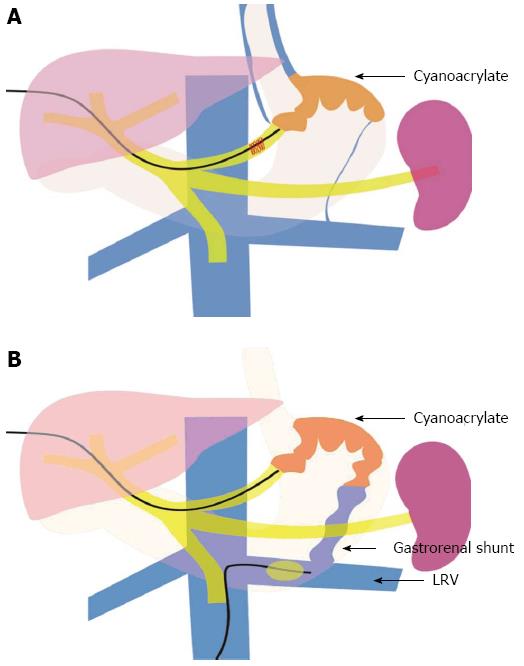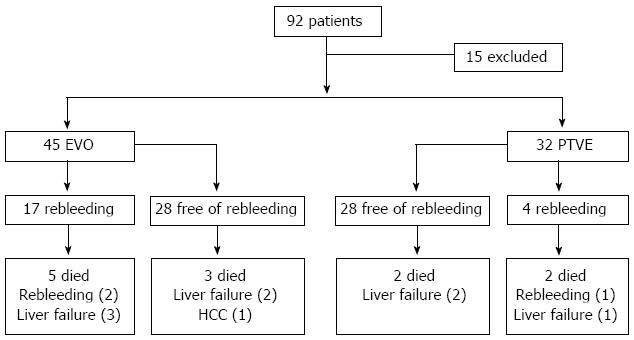Copyright
©2013 Baishideng Publishing Group Co.
World J Gastroenterol. Feb 7, 2013; 19(5): 706-714
Published online Feb 7, 2013. doi: 10.3748/wjg.v19.i5.706
Published online Feb 7, 2013. doi: 10.3748/wjg.v19.i5.706
Figure 1 Illustrations of the two types of percutaneous transhepatic variceal embolization.
A: Cyanoacrylate was directly injected into the gastric varices by percutaneous transhepatic variceal embolization (PTVE) alone in patients without large gastrorenal shunts; B: Cyanoacrylate injection with PTVE combined with a balloon catheter inserted into the left renal vein (LRV) in patients with large gastrorenal shunt.
Figure 2 Flow diagram of rebleeding and death after procedures.
EVO: Endoscopic variceal obturation; PTVE: Percutaneous transhepatic variceal embolization; HCC: Hepatocellular carcinoma.
Figure 3 Cumulative survival.
A: The cumulative rebleeding free rate was higher in the percutaneous transhepatic variceal embolization (PTVE) group than in the endoscopic variceal obturation (EVO) group, P = 0.011, log-rank test; B: The cumulative free gastric varix (GV) rebleeding rate was higher in the PTVE group than in the EVO group, P = 0.012, log-rank test; C: The cumulative survival rate was not different between the two groups. P = 0.432, Log-rank test.
- Citation: Wang J, Tian XG, Li Y, Zhang CQ, Liu FL, Cui Y, Liu JY. Comparison of modified percutaneous transhepatic variceal embolization and endoscopic cyanoacrylate injection for gastric variceal rebleeding. World J Gastroenterol 2013; 19(5): 706-714
- URL: https://www.wjgnet.com/1007-9327/full/v19/i5/706.htm
- DOI: https://dx.doi.org/10.3748/wjg.v19.i5.706















